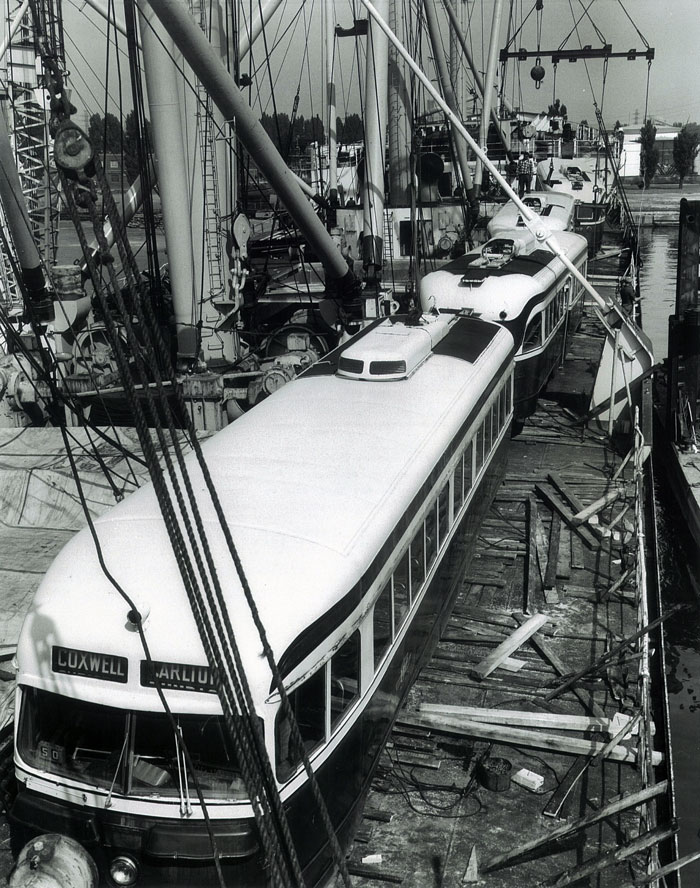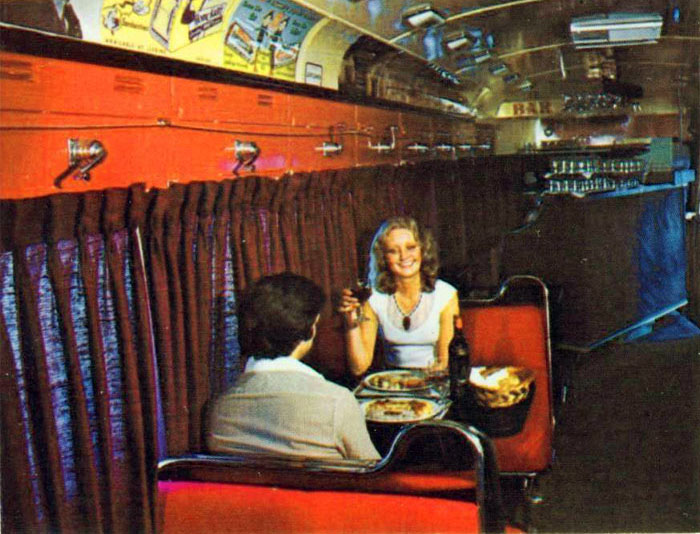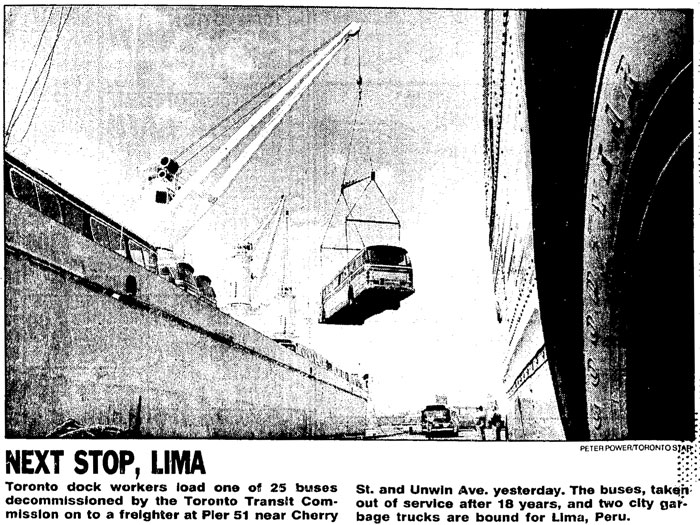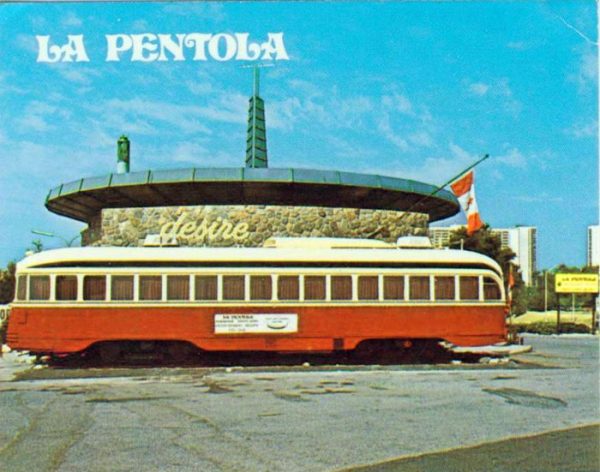Toronto’s outgoing fleet of streetcars could be the first not to get a second life in another city.
Perhaps due to advanced decrepitude, the current CLRV and articulated ALRV streetcars are bound for the scrapheap when the new low-floor Bombardier streetcars (eventually) arrive.
It’s a shame, really, because the Toronto Transit Commission has a long history of sending its old vehicles—buses, streetcars, and subway trains—to far-flung jurisdictions for a
It started in 1922. When a swath of Northern Ontario was ravaged by wildfire, the TTC shipped 87 disused streetcars to the affected area on railway flatcars as temporary housing. Many of the old streetcars had coal stoves—a feature from a time before electric heating—and were ideally suited as makeshift shelters.
The town of Haileybury, which was among the worst-hit, received 60 former streetcars. The remaining 27 were distributed among the communities of North Cobalt, Charlton, Thornloe, and Heaslip.
“We will make the beds at one end, have the kitchen in the centre by the stove and have a living room and parlour at the other end,” one man told the Toronto Daily Star. “My wife is all tickled with the idea of our new streetcar.”

The biggest exodus of used streetcars came in the 1960s and 70s. After the opening of the Yonge, University, and Bloor-Danforth subways and the resulting closure of several surface routes, the TTC found itself with a large surplus of 200 “Red Rocket” Presidents’ Conference Committee streetcars.
The Toronto Star reported expressions of interest in the excess fleet from all over the world, including cities in Europe and South America. The first firm order came from a Chicago company, which placed a $2,000 option on several old PCCs on behalf of the transit system in Alexandria, Egypt.
The first 30 North Africa-bound streetcars left the Port of Toronto on a cargo ship in 1966, and another 28 followed just before the winter freeze halted travel down the St. Lawrence Seaway.
In total, Alexandria received 140 PCCs between 1966 and 1968. Despite their age, the streetcars appeared do well in the hot new climate. According to transportation history blog Transit Toronto, the PCCs survived the Arab-Israeli War in 1973 only to ultimately be removed from service in 1984.

Several years after the Egypt order, in 1971, the city of Tampico, Mexico ordered 10 used TTC PCCs for its streetcar system. Though only nine were ultimately delivered, (according to Transit Toronto, payment failed to arrive for the final streetcar,) the vehicles remained in useful service until December, 1974, when Tampico closed down its surface rail network.
The remaining PCC stock remained somewhat closer to home: San Francisco purchased 11 PCCs in 1973, Philadelphia took 29 in 1976, and little Kenosha, Wisconsin bought six for use on its historic waterfront streetcar loop.

A handful of others ended up as museum pieces or in private collections. La Pentola restaurant on Eglinton Avenue East turned one into a dining room and cocktail bar. Another was briefly converted into a boutique at Dundas and Bay streets before being removed to Thornhill for use as an office on a corn farm.
The recently demolished Duke of York public school at Shuter and Parliament streets bought one, stripped the wheels and motor, and turned it into a research and writing room. “It could become a new type of portable,” said TTC vice-chairman Ford Brand told the Toronto Daily Star.
Regular travellers of Highway 10 will have seen the ex-Toronto PCC attached to Super Burger where the road meets Highway 89, near the town of Mono. Unfortunately, thanks to years of wind and rain, the owners of the restaurant recently decided to throw out the fast food joint’s kitschy feature.
The TTC didn’t only deal in used streetcars. In the 1980s, the city of Lima, Peru was interested in purchasing several old bright red Gloucester subway cars that debuted in the 1950s, but the deal ultimately fell through when construction of the line became mired in financial difficulties.

Though the subway deal didn’t work out, Lima did buy 25 old TTC buses and two city garbage trucks in 1991. Like the PCC streetcars in the 1960s and 70s, the road vehicles were loaded about ships in the Port of Toronto at Cherry Street.
The most recent foreign purchase of surplus TTC stock came in 2011, when a company working on a rapid transit line in Lagos, Nigeria claimed approximately 75 old H5 cars (the ones with the orange doors.)
Like the Lima deal, the transaction didn’t quite work out for the recipient. Though the subway cars were shipped as far as the United States for alterations, Lagos later decided to purchase Chinese vehicles instead, and the TTC subway cars were torn up for scrap.
So far, the Toronto Transit Commission hasn’t revealed whether any of the old CLRV or ALRV streetcars will be preserved, and no willing buyers appear to have expressed an interest.
The lack of interest perhaps isn’t all that surprising: The oldest in the fleet have been battling through scorching summers and bitter cold Toronto winters for close to 40 years, and it now takes a team of dedicated blacksmiths, upholsterers, and other technicians just to keep the ageing vehicles on the road.
Hopefully someone, somewhere, is interested in preserving the icons of Toronto, even if they are a little rusty.





5 comments
Correction: those aren’t Witts in the photo going up north, they are old ex-Toronto Railway Company wooden cars. Witts didn’t hit the streets of Toronto until 1923.
The CLRV and ALRV 1980’s computerized control systems are virtually impossible to replace. The PCC’s mechanical systems are easier to create parts for even today.
There’s also the shell of a PCC on Highway 6 near the 401.
I’d be surprised if at least one didn’t make its way to the museum in Rockwood. I think they more or less have one of everything.
Yet, in the 1950’s, the TTC bought 205 used streetcars from the states, at bargain prices. The last “used” streetcar saw service in 1977 (Kansas City’57, no. 4766).
Actually, the last of the used streetcars was around until 1983. 4704, an ex-Birmingham car was the last one operated.